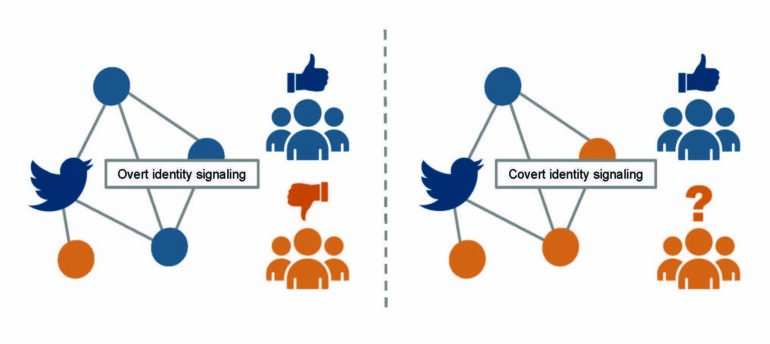In the 1970s, a handkerchief peeking from a man’s back pocket was a useful way of signaling his gayness to other gay men—while keeping his sexual identity secret from everyone else, who were unlikely to know the hanky’s hidden meaning.
This is an example of a “covert signal,” and a new paper in the Proceedings of the National Academy of Sciences demonstrates empirically for the first time that people use covert signals of their political identity online. Furthermore, they do so more often in mixed groups, preferring overt signals in groups that mostly share their beliefs. These covert signals allow people to communicate with people who share their political identity without risking pile-ons from those who disagree.
These ideas were developed in a theory of covert signaling by Paul Smaldino, associate professor of cognitive and information sciences at UC Merced, but had yet to be tested. “This is very hard to study empirically,” says Tamara van der Does, a postdoctoral fellow at Santa Fe Institute and lead author of the paper. “How do you measure a covert identity signal, given that it’s covert?”
She and her coauthors, including SFI Professor Mirta Galesic, puzzled over for months until they came up with a clever strategy. During the run-up to the 2020 election, they collected tweets from politically extreme Twitter users, on both the left and the right. Indiana University graduate student Zackary Dunivin developed a method to download follower networks and determine if the followers were mostly similarly extreme, or more heterogeneous. Then for each tweet, they had four groups of raters guess the political affiliation of the tweeter. Some of the raters were politically extreme, either on the right or the left, and some were more moderate. The tweets that generated the most disparate guesses between these groups were selected as the most likely to be covert signals.
Finally, the raters played an online game, where they selected from overt and covert tweets to share with groups of audience members who were either strictly politically co-partisan with the rater or mixed co- and cross-partisan. Their goal was to maximize likes and avoid dislikes from the audience members.
“We wanted to see: when there are more audience members from the out-group, do participants in the game share more covert tweets?” van der Does says. “We were quite mind blown, in that it was actually the case!”
“Strategic identity signaling in heterogeneous networks” is published in PNAS.
More information:
Tamara van der Does et al, Strategic identity signaling in heterogeneous networks, Proceedings of the National Academy of Sciences (2022). DOI: 10.1073/pnas.2117898119
Provided by
Santa Fe Institute
Citation:
Covert and overt political signaling online (2022, March 4)



